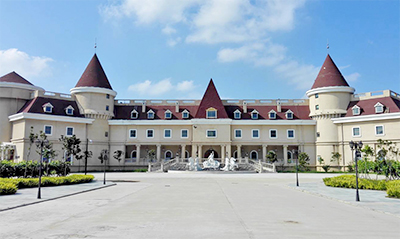Australian wineries uncork Chinese market boom
FINDING new routes to market that cut out the ‘middle man’ are emerging as the latest trend in the rise and rise of Australian wine sales in China.
China last year overtook the United States to become the biggest buyer of Australian wine, following a 40 percent growth in sales for 2016. Exports of wine to mainland China rose from A$370 million in 2015 to $520 million in 2016.

Barossa Valley winery Seppeltsfield was to open a new wine chateau in China on May 13 in a joint venture with Minquan Jiuding Wine Company Ltd. It is the first Chinese chateau to have a part ownership stake by an Australian winemaker. The South Australian winery has a 37 percent stake in the $75 million project.
The news came as Chinese online retailer YesMyWine took a 15 percent share in major wine company Australian Vintage Limited.
The Seppeltsfield investment, to be known as Chateau Seppeltsfield Minquan, has been under construction for three years in the province of Henan, which is about three hours by high-speed rail from Beijing and Shanghai. It is also a one-hour drive east of Henan’s capital Zhengzhou, a city of almost 10 million people.
The chateau will sell Seppeltsfield and Minquan Jiuding wine and bottle bulk wine sent from South Australia. It is also aimed at China’s burgeoning wine tourism sector and will be used to market Seppeltsfield in the Barossa Valley to Chinese tourists.
Senior research scientist at the Ehrenberg Bass Institute for Marketing Science, Justin Cohen, spends several months a year in China working on projects, some funded by Wine Australia and others to more broadly understand retail and media in a Chinese context.
Dr Cohen said investing in an area well away from China’s major ‘tier one’ cities presented an opportunity to introduce more people to Australian wine for the first time.
“When you think about population there may well be more than enough people within Henan to build a strong brand in the local market – China is not the kind of country where you can say ‘I’m going to be across the entire country unless you’re Coca-Cola’,” Dr Cohen said.
“This is a very exciting and ambitious project and I think it could do wonders in helping build the awareness of Australian wine in parts of China that have not had much investment previously from a market development standpoint.
“The Australian model previously has been to attract Chinese investors into Australian wine brands and then they can use their relationships to help trade the wine in China but this is obviously a different type of relationship where they are investing into a Chinese business.
“The real litmus test will be if we start seeing representatives from other Chinese chateaus and wine businesses suddenly coming to the Barossa, McLaren Vale, Hunter Valley or Margaret River looking for Australian business partners.”
Dr Cohen said many larger Australian wine brands were moving away from the traditional model in Australia of establishing relationships with specialist distributors.
He said e-commerce as a platform for selling Australian wine to Chinese consumers was growing fast and also cut out ‘the middle man’.
“The biggest companies are moving away from working with specialist distributors and are doing deals directly with large retail groups and that is allowing them to bring their wines to the market at a lower price point,” Dr Cohen said.
“There are definitely some online platforms doing some great things in terms of education and engagement to make wine more accessible but it is still pointed at the top end of the market.”
Henan, in Central China’s Yellow River Valley, is home to the Shaolin Temple and has a population of about 95 million. It is the third most populous province in China and has the fifth largest provincial economy.
“I think growth is going to come from getting new buyers into the category and that’s what is very interesting to me with the Seppeltsfield project,” Dr Cohen said.
“You’ve got a part of China that most people have never even heard of and you’re going to have people that know of Australia because of other products such as milk powder or beef and it’s an opportunity to get them excited about wine.
“The gateway is through Chinese wine because it’s cheaper than imported wine but if they are able to bring quality Australian wine to the market at a competitive price point then it will be exciting to see what it can do to bring new wine drinkers into the category.”
According to the Organisation of Vine and Wine, Australia was the world’s fifth largest wine-producing nation in 2016 behind Italy, France, Spain and the US.
South Australia is consistently responsible for about 50 percent of Australia’s annual production and 75 percent of the nation’s premium wine.
The Barossa Valley produces world-renowned brands such as Penfolds Grange, Jacob’s Creek and Wolf Blass.
ends

